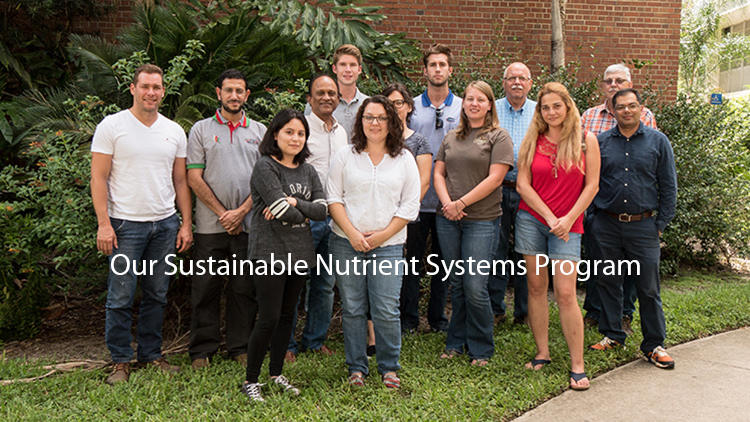Overview
Plants provide most of the nutrients which people and animals need to live. Plants get the nutrients they need from the soil and the air. Plants absorb these nutrients and convert them into forms useful to animals and people.
Crop growth is most efficient when the nutrients needed by the plants are supplied to the plants in the right amount and at the right time during their growth cycle. Soils supply most of the nutrients that plants need. However many times soils need a recharge of some of these nutrients. This recharge can be provided commercial fertilizers, manures, and other organic sources (plant residue, etc.) This additional supply of nutrients can be essential for plant growth and also can be an expensive part of crop production.
Florida agriculture is a multibillion dollar industry adding $20 billion to Florida's economy. Florida has over 40,000 commercial farmers. They are among the most productive in the world using a little more than 10 million of the state's 35 million acresto produce more than 35 billion pounds of food, andmore than 1.5 million tons of livestock feed. Florida farmers employed an average of 57,000 farm workers monthly in 1998. Florida has maintained its position as the nation's No. 9 ranked agriculture state with record sales of $6.686 billion in 1998. Florida is the nation's No. 1 citrus producing state, ranks No. 2 in the production of vegetables and horticulture products, and No. 4 in all crops.
Successful crop production depends on plant receiving the correct amounts of nutrients at the appropriate times. The soil supplies many nutrients but additional nutrients may need to be provided to obtain maximum crop yield. These nutrients can be supplied from soil amendments in the form of fertilizers, manures, and other organic sources.
Nutrients must be managed wisely to preserve the quality of the soil, water and air. Over time poor nutrient management can impair the land's ability to produce crops. Nutrient management is a critical part of maintaining Florida's land. Applying too few or an excess of nutrients is not good for the land or for the farmer. Too little nutrients cause yield and profits to drop. Applying more nutrients than the crop can use increases the costs of production and decreases profits. Too much nitrogen increases the risk of nitrate-nitrogen leaching from the soil, polluting our groundwater resources. The excess nutrients can also be carried away by rainfall runoff to nearby streams and lakes. Surface waters can be polluted by sediments and nutrients attached to these sediments.
Nutrients are chemical elements needed by plants during their life cycles. Nutrients are present in water, the air, and in soils. Six nutrients are required by plants in large amounts. These nutrients are known as macronutrients. Three of these macronutrients are the most common elements in plants: carbon, hydrogen and oxygen. These elements are obtained through the water and air. The other three macronutrients: nitrogen, phosphorus and potassium are naturally present in soil in inorganic forms, as the result of the weathering of soil minerals.
|
Macronutrients
|
||
|
Carbon
|
Hydrogen
|
Oxygen
|
|
Nitrogen
|
Phosphorus
|
Potassium
|
|
Micronutrients
|
||
|
Boron
|
Calcium
|
Chlorine
|
|
Cobalt
|
Copper
|
Iron
|
|
Magnesium
|
Manganese
|
Molybdenum
|
|
Silicon
|
Sodium
|
Sulfur
|
|
Vanadium
|
Zinc
|
-
|







